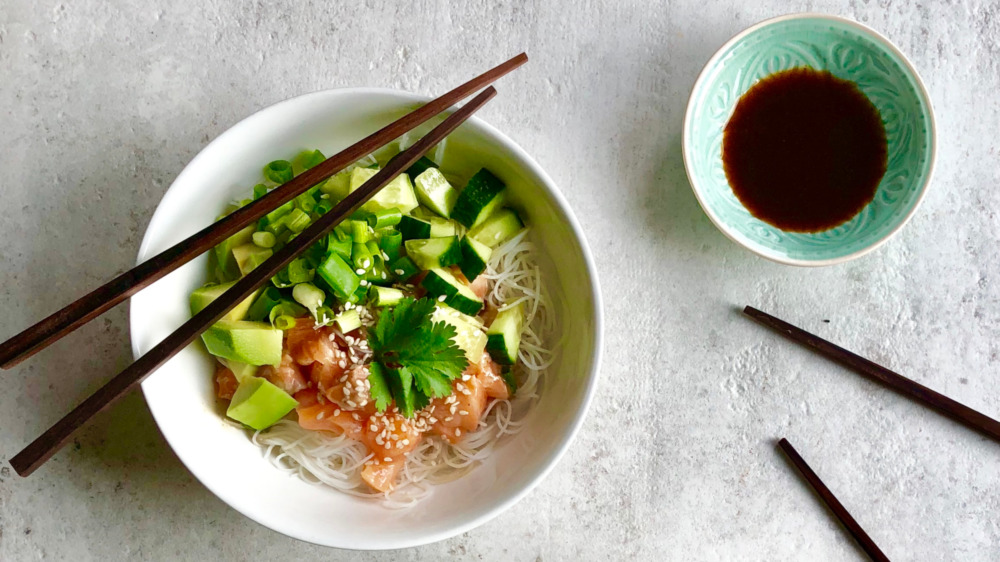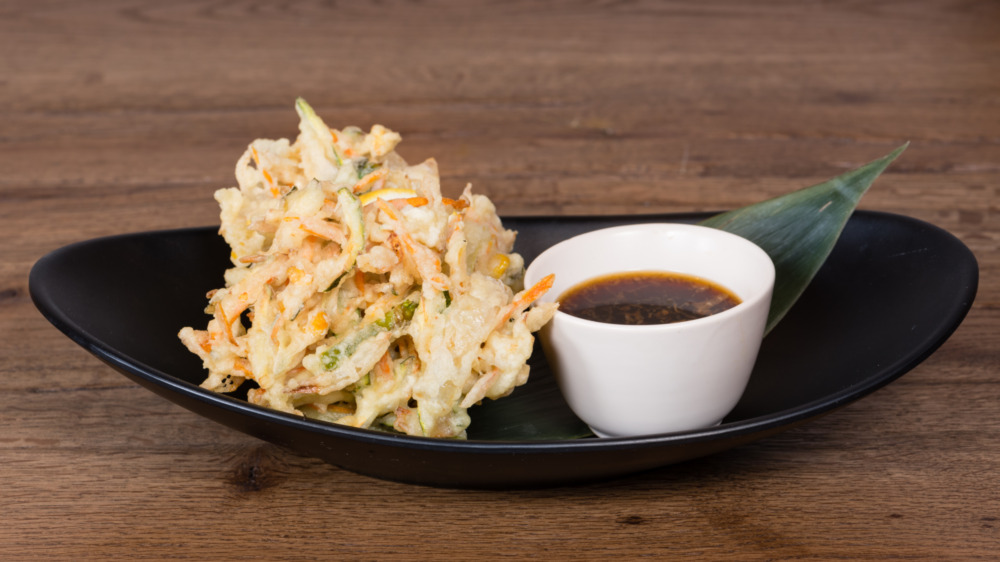What Is Tamari And What Does It Taste Like?
If you feel like you're hearing more about tamari recently, it's for a good reason. According to Spoon University, tamari has been steadily gaining in popularity as an alternative to soy sauce, particularly for those with food sensitivities. Unlike soy sauce, which contains wheat, tamari is usually gluten-free. It's also lower in sodium (around 233 mg per tablespoon, versus 900 mg for soy sauce, according to MasterClass), making it popular among those watching their salt intake. Tamari, also known as tamari shoyu, also has an appealing flavor profile that is piquing interest in this Japanese condiment.
You might have seen or tasted tamari at your favorite sushi restaurant because it can be served on its own as a dipping sauce or condiment, or as an ingredient in other sauces and recipes. According to MasterClass, both soy sauce and tamari have their uses and deserve a place on your pantry's shelf. This is because both sauces illustrate the usefulness of the fermentation process in the building of savory, complex umami flavor. However, while traditional soy sauce tends to have a more obvious salinity and a sharp, almost vinegar-like quality thanks to the wheat, tamari, which contains strictly soybeans, is mellower and more nuanced. Tamari is richer and deeper in its umami flavor, so as opposed to more acidic, salty soy sauce, tamari adds a layer of savory, "meaty" flavor to vegan or vegetarian dishes.
Tamari is made from miso paste fermentation
There are actually many types of soy sauces, all products of the soybean fermentation process, and tamari falls under this umbrella (via The Spruce Eats). According to Spoon University, while the Asian continent gave us a rich variety of these sauces, tamari traces its origins to Japan, whereas traditional soy sauce was developed in China. Soy sauce is the liquid that results from the fermentation and pressing of soybeans as well as wheat (the source of the gluten in soy sauce) and other grains, whereas tamari is the liquid that's collected in the process of fermenting miso paste (via MasterClass).
As opposed to soy sauce, tamari features more balanced flavor and subtler saltiness, as well as its thicker consistency. This makes tamari a better condiment or dipping sauce than traditional soy sauce, which can overwhelm the taste of foods with its saltiness. You can use it with cooked fish, sashimi, sushi, nigiri, noodles, poke, tofu, tempura, or dumplings. It's also a great way to add umami and richness to marinades, stir-fries, and soups.
You'll find tamari sauce on the shelf at your grocery store right next to the soy sauces. Bring home a bottle and try it in your next Asian dish or anytime you want to add complex, deep flavor to your food.

